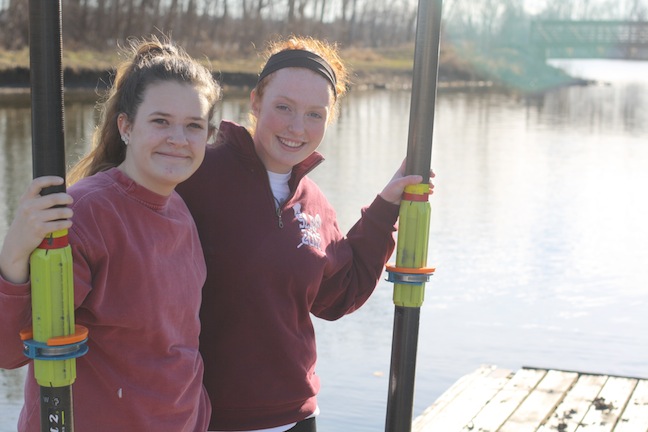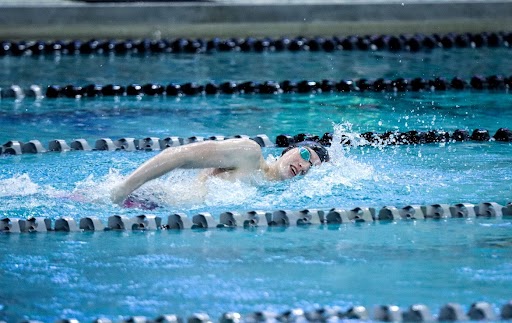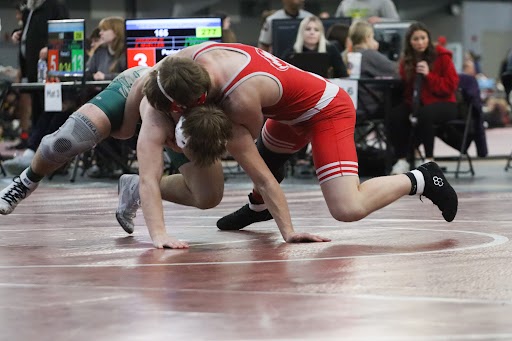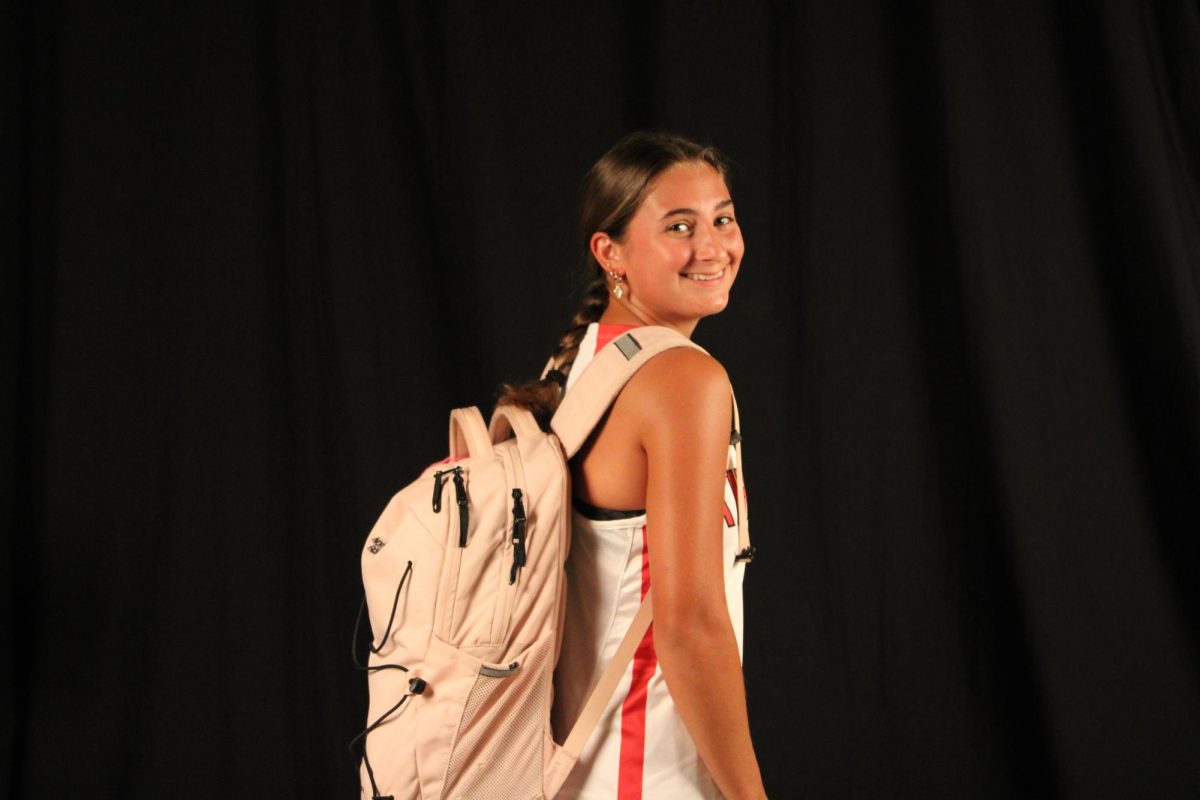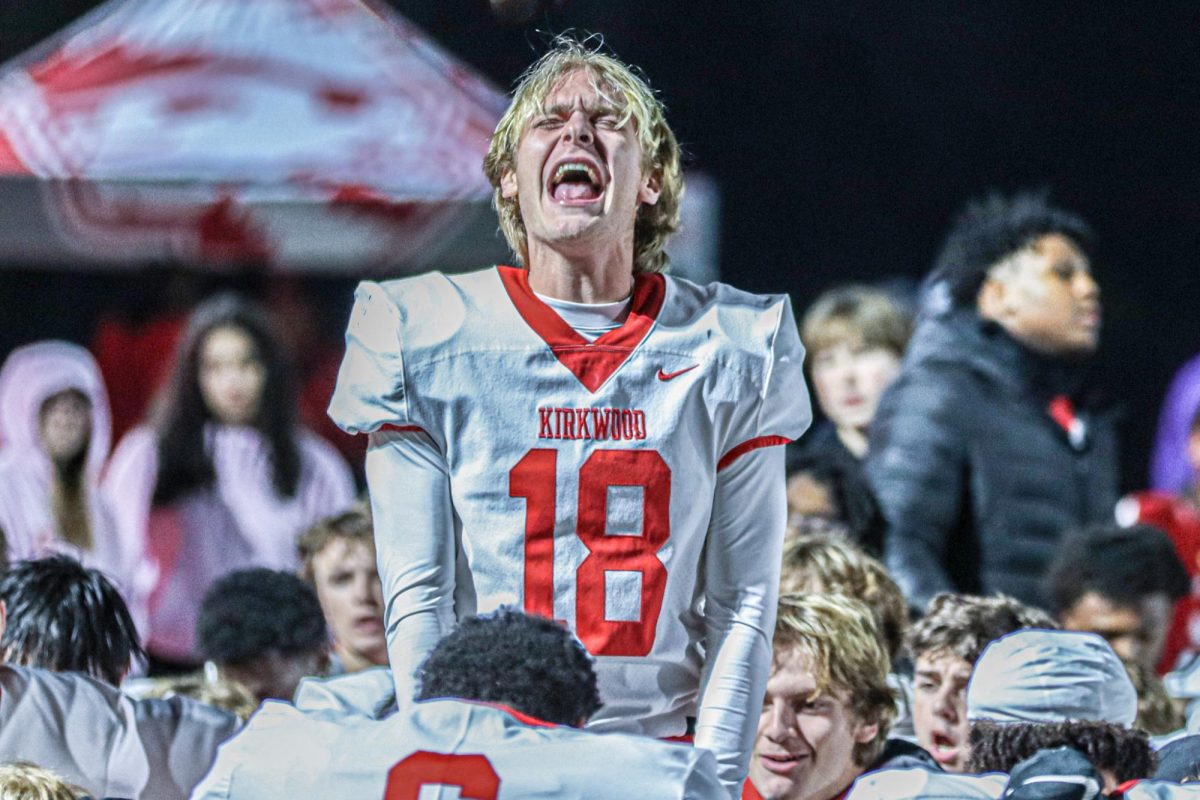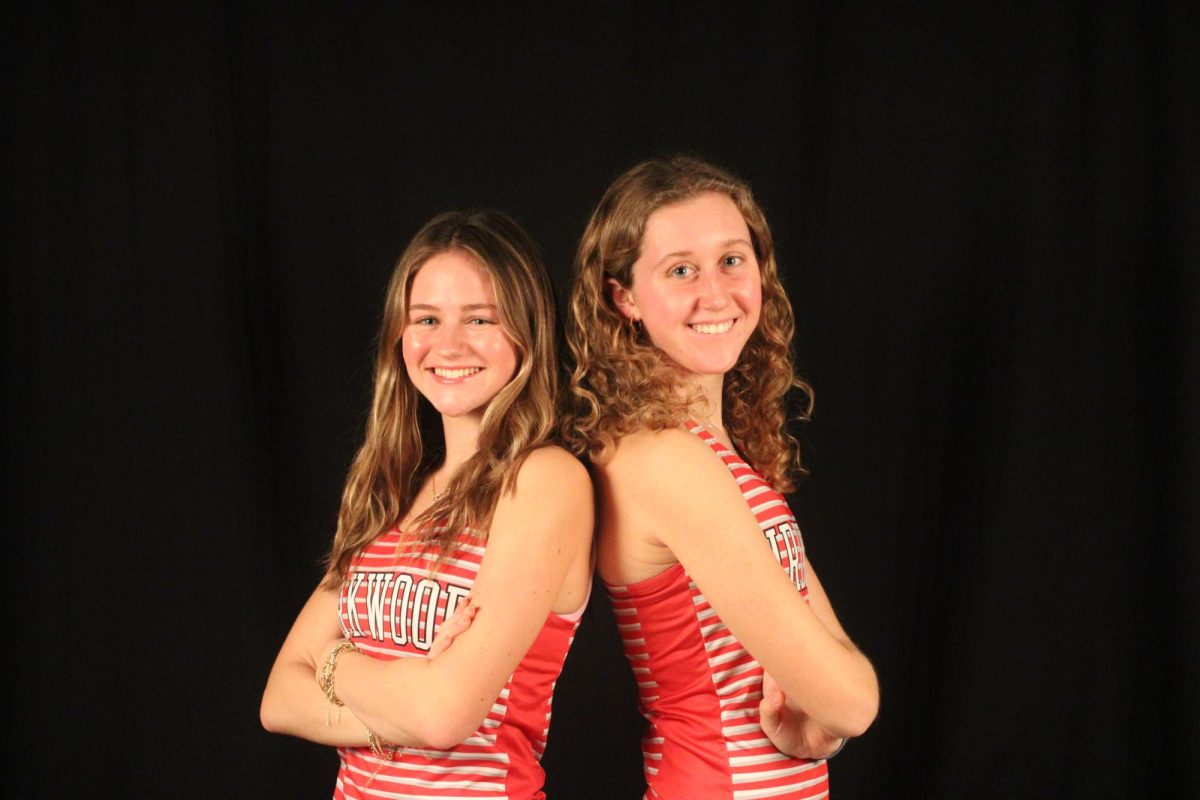St. Louis Rowing Club withstood the “Great Flood of 1993” which devastated the Midwest, as well as destroying the club’s boathouse and equipment. Since then, they have gone on to medal in the 1993 and 1995 Junior Olympic Festivals. This was achieved while still displaying the century-old St. Louis Rowing Club emblem on their jerseys.
Two KHS female students sport the classic rowing emblem on the chests of their jerseys. Marisa Meiners, junior, and Gaby Danahy, senior, both row for the St. Louis Rowing Club high school program; Meiners for the Junior Novice (beginners) team, and Danahy for varsity.
Meiners played soccer her entire life, until she tore her ACL last spring. She tried getting back into soccer this year, a sport that granted her a spot on varsity since freshman year. However, it did not work out, so she turned to rowing.
“At first I didn’t really know if I was going to like it because it’s so much harder than soccer training was. But after a couple weeks, I just loved it,” Meiners said. “The people are awesome and it’s hard work, but it’s fun.”
Meiners competed in the 2013 St. Louis Indoor Rowing Championships at the Washington University Athletic Complex Feb. 2. She recorded the top three times on her Novice team. Her average 500-meter time in a 2,000 meter race was 1 minute 58 seconds. Meiners’ total time for 2,000 meters (equivalent to 1 ¼ miles) was 7 minutes 52 seconds.
Kai Dadian, the head coach for the girls’ Junior Novice team, rowed with the St. Louis Rowing Club from 2004-2007 while a student at University City High School. He was Meiners’ first rowing coach.
“Her form and her technique were very solid from the beginning,” Dadian said. “She seemed like a pretty stellar athlete, that she had been an athletic person before she came. She was willing to give it her best and give it her all and really devote herself to the team.”
While Meiners seemingly jumped right into rowing, Danahy’s association with the sport dates back to her hometown in Moorestown, New Jersey, where, according to Danahy, rowing is more popular. Her freshman year, many of Danahy’s friends were rowing, so she joined them. The summer before her junior year, Danahy’s father got a new job and her family moved 912 miles west to Kirkwood. Danahy wanted to stick with the sport, which is how she found the St. Louis Rowing Club.
Tim Franck, the St. Louis Rowing Club high school program head coach and girls’ varsity team head coach, calls Danahy a very dedicated member of the team.
“Whenever you move to a new town where you don’t know anyone, it certainly helps to have groups that you can be a part of immediately and spend a lot of time with and get to know a group of people and be friends with,” Franck said.
Danahy stuck with the sport because of the teamwork required to keep the boat strong and steady. She said this is the aspect that sets rowing apart from other sports.
“When you’re rowing, you’re rowing for your teammates,” Danahy said. “You can have up to eight people in a boat, and so you all have to stick together and row together and row for each other. You become really close to your teammates for that reason. It’s not like other sports where it’s individual or you have playing time or not. You always have a spot.”
Dadian preaches the importance of finesse while in a boat with three or seven other rowers pouring their energy into each stroke. He has the same perspective on the teamwork used.
“It’s not where one person can score a goal in a game,” Dadian said. “The whole boat is dedicated to winning the race, and they have to do it together or else they won’t win. In that sense, it’s a pretty exquisite sport.”
According to Meiners, this teamwork does not come easy. She said physical performance is hard, involving the core, legs and arms. Meiners, Danahy and Dadian all said mental strength comes into play.
“It takes the ability to push yourself further than the mind tells the body to,” Dadian said. “Essentially, it’s really putting a lot of power into the stroke but using good form and technique at the same time. Many people find that’s really hard to do. As your energy deteriorates and your body gets tired your mind can fall apart also. It takes a lot of mental training.”
In order to stay strong during competitions, rowers must build mental strength during practices. The high school teams practice every day except for Tuesday and Sunday, for approximately two hours each practice. When weather permits, they go out on the lake. When they are not on the water, they spend time on the erg machine, a machine used indoors to simulate the action of rowing for a workout.
“When you’re erg’ing you just want to stop because your body hurts so bad,” Meiners said. “But you have to keep going. It gets more mental than physical at times.”
Teams must stay physically and mentally fit to compete in competitions. Many of these competitions take place in Chicago or Cincinnati, and, according to Danahy, her team always comes home with medals. Danahy said the busy schedule rowing puts onto her plate has cut deeply into her social life.
“I can’t hang out on weekdays ever, because when I come home if I don’t fall asleep I have to do a lot of work,” Danahy said. “On weekends, I don’t really go out on Fridays. The people you row with basically become your best friends because you spend so much time with them. You don’t really have a lot of time to have a social life.”
Danahy said rowing has changed her life, helped her to manage her time and stay fit. While Danahy does not plan on pursuing rowing after high school, Meiners said she might be looking for opportunities to row in college.
Ivy League colleges do not give out athletic scholarships, but according to Dadian, they take rowing seriously into account when going through applications. It is the athletic scholarships available throughout the nation that Dadian thinks has given the sport a spike in interest for females.
In the eight years Franck has been with the high school program, he said it has experienced an increase from 30 or 40 athletes when he first started to 130 in 2013. However, Meiners said the sport is not recognized very much at KHS.
“A lot of people joke around like, ‘Oh, you’re a rower’, but I think it’s catching on,” Meiners said. “I can understand because I was once the soccer and ‘real sport’ kind of person, but I don’t think a lot of people know how team-oriented rowing really is.”


